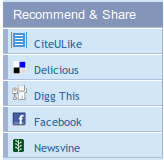I enjoy a good joke. I’m not so politically-correct that I won’t laugh at the expense of others – remember I grew up in the UK, where bullying was part of the culture ;-), nor so po-faced that I can’t laugh at my own expense.
I do not enjoy April Fools. Jokes on this day are rarely, if ever, good jokes. Perhaps they were more fun when humans lived in small, isolated communities with little knowledge of the outside world and so could be fooled en masse by spaghetti trees. However, this is the 21st century, the age of information. We should be harder to fool, because we know more about the world.
Paradoxically, it’s the information age that enables the flood of tedious, blatantly false, time-wasting stories in our inboxes and feed readers every April 1st. You might even say that everyday is April 1st, somewhere on the Web. The elements of surprise and ignorance are gone. Perhaps it’s time to abandon this quaint custom.
Which brings me to Slideshare, who decided that it would be tremendously funny to (1) inflate users’ slide views by adding two zeroes and (2) inform their users by email. Read the rest…




